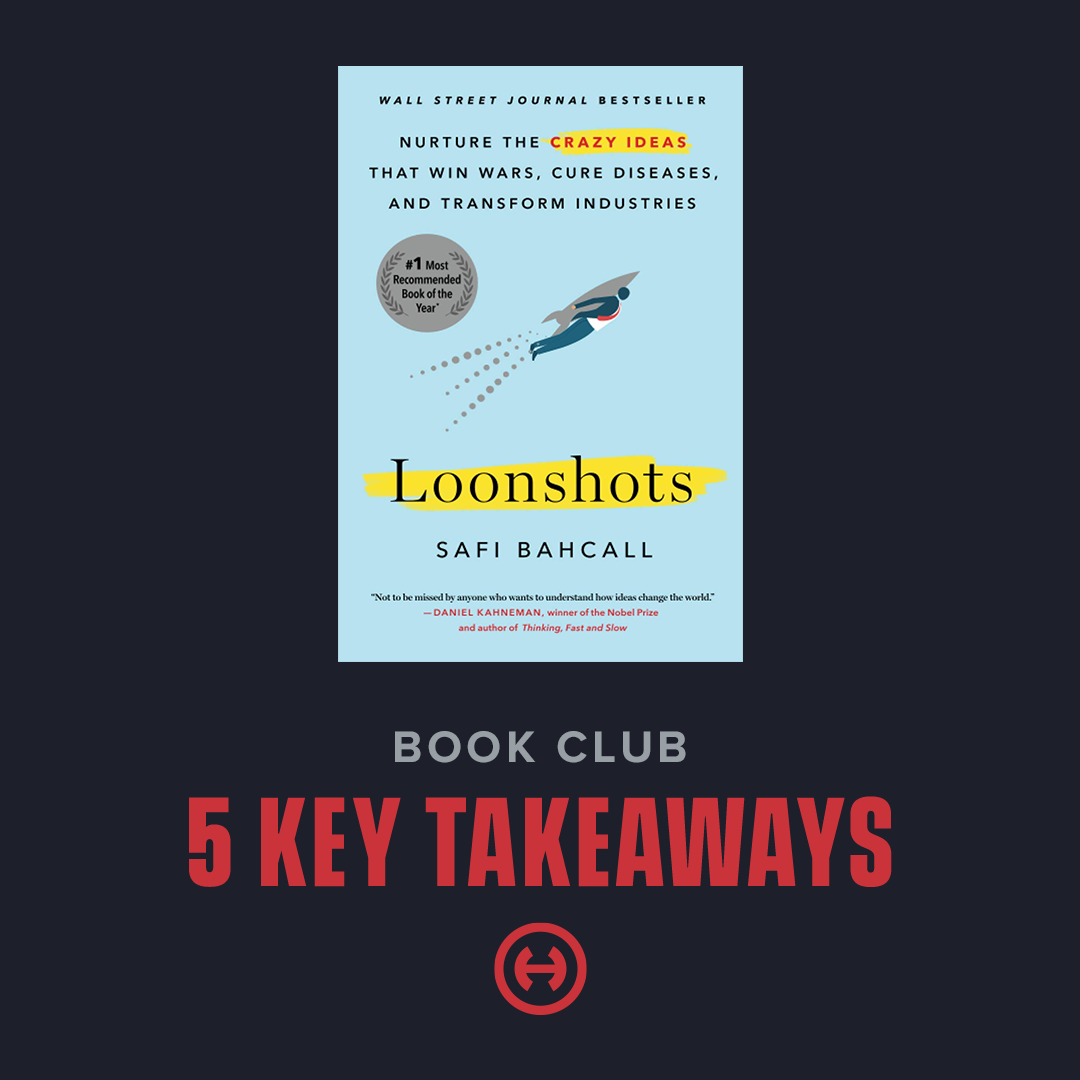If you’re familiar with moonshot ideas, then this book’s for you. At our latest agency book club meeting, we examined the trials and tribulations of “Loonshots: How to Nurture the Crazy Ideas That Win Wars, Cure Diseases, and Transform Industries” by Safi Bahcall.
Bahcall, a physicist, biotech company founder, and McKinsey consultant, describes the importance of nurturing “loonshots” to foster innovation and ultimately success for organizations. Which begs the question, what is a loonshot? He defines this term as a neglected project, widely dismissed, with its champion often written off as unhinged.
Loonshot ideas can ultimately result in radical breakthroughs that can only be created in an internal structure that supports these ideas and incents employees to champion them. If the term “loonshot” piques your interest, consider picking up a copy of Bahcall’s book here. Meanwhile, here are five key takeaways from our team.
- Get Familiar with Phase Transition. A phase transition is when a molecule transforms due to change in environment, e.g., water changing from liquid to solid due to a drop in temperature. Bahcall uses the ‘”phase transition” as a metaphor to explain a pattern of sudden changes in behavior in teams and companies. These sudden changes can be attributed to environments that are rooted in stake and rank. Consider: When groups are small, everyone’s stake in outcomes is high, but when teams grow, the weight of rank increases. When these two forms of incentives cross, the system goes through transitions that no longer support big breakthrough ideas, but instead only support small progress with existing technologies.
- Separate the Phases. Big ideas or loonshots alone are unlikely to sustain the success of a company. An organization must also support “franchise” ideas – those that iterate on existing, successful ideas. (Think of how movie franchises like “Star Wars” capitalize on the success of previous films in the franchise.) Intentionally maintaining separation between loonshot and franchise teams allows each to focus on their unique goals. Bahcall likens these separate groups to phases, like molecules that can exist on the edge of transition, e.g., liquid water and ice existing together in the same glass, still separate in form but coexisting in the same space.
- Create Dynamic Equilibrium. The balance between loonshot and franchise teams will inevitably shift as projects ebb and flow, but managing that balance and creating a dynamic equilibrium is vital to the success of both groups. It’s ideal to have a team leader who is a “gardener,” tending to the balance and encouraging transfer and exchange between these two teams to cultivate an environment in which both can thrive. In contrast, it’s best to avoid having a team leader that Bahcall calls a “Moses,” which is one who plays judge and jury of new ideas and anoints loonshots – potentially hindering innovation, independence, and even motivation to ideate.
- Encourage a System Mindset. An Outcome Mindset focuses on why an idea did or did not work, while a System Mindset instead analyzes the how. The System Mindset considers the context, routine and preparation that went into an idea to prevent what Bahcall calls a “False Fail.” A False Fail is when a project or idea fails, not because it was a bad idea or couldn’t succeed – but instead fails because it lacked an effective champion, had an experimental flaw or was subject to other outside forces or obstacles. A System Mindset helps companies dig deeper and prevents ideas from being killed too early for the sake of nurturing loonshots (and even creating successful franchise iterations in the future).
- Raise the Magic Number. As a company grows, it reaches a phase transition where incentives increase for killing loonshots and supporting franchises. Bahcall calls this transition the “invisible axe,” which tends to fall when the company reaches a “magic number” of employees. To raise the magic number where this incentive flip is likely to happen, it’s important to examine whether the company is unknowingly or knowingly encouraging associates to prioritize office politics and upward mobility above championing ideas. Other factors to consider include equity (how an employee’s pay is tied to the quality of their work), management span (the number of people each person manages), organizational fitness (the level of an employee’s skill on their assigned projects), and salary growth rate (how much salary increases with each promotion).
All of these factors can help the company continue to provide an environment where ideas and quality of work matter. Considering a loonshot can bring balance in continuing to create, explore and cultivate the next million-dollar innovation or franchise opportunities.
Excited to find your brand’s next loonshot? Email Dana Arnold at darnold@hiebing.com to set up a call.
